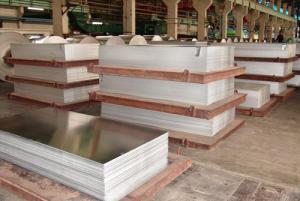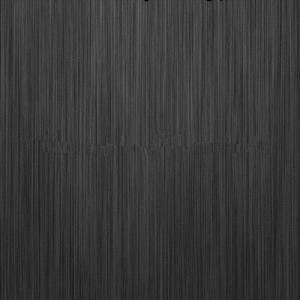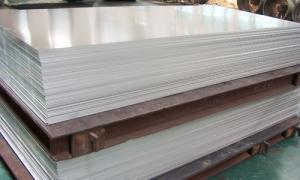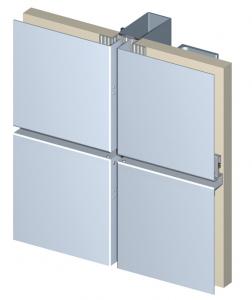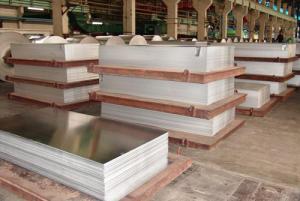6061 T6 Mill Finished Aluminum Plain Sheet from China
- Loading Port:
- Shanghai
- Payment Terms:
- TT or LC
- Min Order Qty:
- 5 m²
- Supply Capability:
- 9000 m²/month
OKorder Service Pledge
OKorder Financial Service
You Might Also Like
Specifications
1)Alloy: 1series
2)Temper: H18 .H24 .H32 .H112 . O .F.T6 T651
3)Thickness: 0.2MM-20MM
4)Width: up to 1500mm
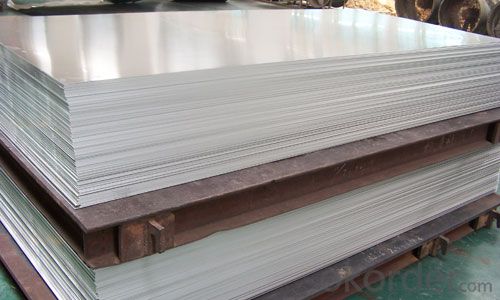
1)Alloy: 6061
2)Temper: H18 .H24 .H32 .H112 T4 T6 T651 O
3)Thickness: 0.2MM-20MM
4) Width : up to 1500mm
5) Good plasticity and conductivity
6) Dimensions can be produced as per clients' specifications
7) Generally used for industrial and construction applications
Packing:Export standard packing
Product | Aluminum sheet |
Alloy | 1100 1050 1060 3003 3004 3105A 5005 5052 5754 5083 6061 6063 6082 8011 |
Temper | H14, H16, H18, H19, H24, H26,H32,H112,T4,T6,T651,O |
Width | 900—1500mm |
Thickness | 0.3—20mm |
Payment | L/C or T/T |
Packaging | Standard export packing |
Delivery time | In 20-30days after receiving L/C or T/T |
Mini order | 5tons |
Packaging & Delivery
Packaging Details: | Covering with brown paper and plastic bag then packed with wooded plywood then directly loading into container for transshipment |
Delivery Detail: | 20-25days |
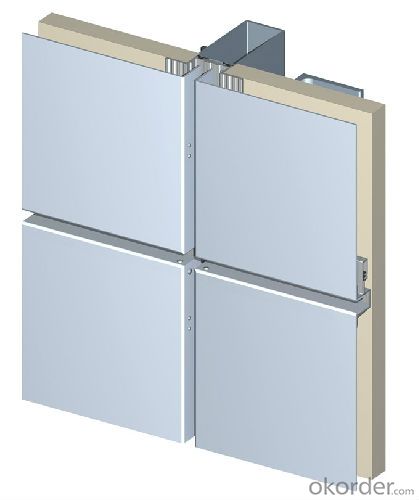
Our Services
1) Reply within 12 hours
2) Free samples provided
3) On-site production following-up
4) Loading inspection with container fixing
5)Third party inspection at your request
FAQ
1) What is the delivery time?
Dpends on actual order, around 20 to 35 days
2)What is the QC system:
We have QC staff of 5 persons and advanced equipment, each production is with MTC traced from Aluminum ingot lot.
3) What market do you mainly sell to?
Australia, America, Asia, Middle East, Western Europe, Africa etc
4) Why CNBM?
With us, you get most competitive price, guranteened quality with assured delivery time and after sales service
- Q:What are the different methods of bending aluminum sheets?
- There are several methods of bending aluminum sheets, each with its own advantages and limitations. Some of the commonly used methods include: 1. Press Brake Bending: This method involves clamping the aluminum sheet between a punch and a die on a press brake machine. The sheet is then bent by applying force through the punch, which pushes against the die. Press brake bending is ideal for high-volume production and can achieve precise and consistent bends. 2. Roll Bending: Also known as a three-roll bending process, this method uses a set of three rollers to gradually bend the aluminum sheet into the desired shape. Roll bending is suitable for creating cylindrical or conical shapes and is often used in industries like automotive and aerospace. 3. Stretch Bending: In this method, the aluminum sheet is clamped at both ends while a stretching force is applied in the middle. The sheet is elongated and bent simultaneously, resulting in a curved shape. Stretch bending is commonly used for producing curved profiles with a smooth and uniform finish. 4. Heat Bending: By applying heat to the aluminum sheet, it becomes more pliable and can be easily bent into desired shapes. Heat bending is often performed using a heat gun or an oven to soften the metal, followed by manual or mechanical bending. This method is useful for creating complex and intricate shapes. 5. Incremental Bending: This method involves bending the aluminum sheet in multiple steps or increments, gradually increasing the bend angle with each step. Incremental bending allows for greater control over the bending process and is commonly used for forming U-shaped or V-shaped bends. 6. Roll Forming: In roll forming, the aluminum sheet is fed through a series of rollers, each gradually bending the sheet a little more. This continuous process is ideal for producing long and consistent bends, often used in the production of aluminum profiles and extrusions. It is worth noting that the choice of bending method depends on factors like the desired bend angle, the thickness and grade of the aluminum sheet, the required precision, and the volume of production.
- Q:What is the typical impact strength of aluminum sheets?
- The typical impact strength of aluminum sheets can vary depending on factors such as alloy composition, tempering, and thickness. However, generally, aluminum sheets have a moderate impact strength, making them suitable for many applications that require resistance to impact and denting.
- Q:What is the cost of an aluminum sheet?
- The cost of an aluminum sheet can vary depending on factors such as size, thickness, and quality. It is recommended to check with suppliers or conduct market research to get accurate and up-to-date pricing information.
- Q:I am engaged in line cutting, because the cut aluminum plate conductive block wear more fierce, molybdenum wire is often broken card, I do not know that heroes have unique skills, say, we share. Thanks.
- The most effective way is to directly use the cutting aluminum electrode wire. Solve the problems of burning, conducting blocks, breaking wires, cutting workpieces and so on. Since the conductive system of machine tool of high and modified carbon brush structure is not the same, will cause the machine not successful,
- Q:Can aluminum sheets be embossed?
- Yes, aluminum sheets can be embossed.
- Q:What is the maximum temperature that aluminum sheets can withstand?
- The maximum temperature that aluminum sheets can tolerate relies on various factors, including the composition of the alloy, thickness, and intended purpose. Generally, aluminum has a melting point of approximately 660 degrees Celsius (1220 degrees Fahrenheit). Nevertheless, aluminum sheets can typically endure significantly higher temperatures without melting or distorting. Regarding most commercially available aluminum alloys, the maximum temperature for continuous utilization varies from 200 to 300 degrees Celsius (390 to 570 degrees Fahrenheit). Beyond this range, the material might begin to display reduced strength and heightened vulnerability to deformation or harm. Nevertheless, it is crucial to mention that the precise maximum temperature limit for a specific aluminum sheet should be determined by referring to the manufacturer's specifications or conducting specific testing. Factors like the presence of coatings or surface treatments, exposure to prolonged heat, and thermal cycling can also influence the maximum temperature tolerance of aluminum sheets.
- Q:Which kind of glue is best for bonding aluminum sheets?
- 502 or universal glue
- Q:Can aluminum sheets be laminated with other materials?
- Yes, aluminum sheets can be laminated with other materials. Lamination involves bonding different layers together to create a composite material with enhanced properties and functionality. Aluminum sheets can be laminated with various materials such as polymers, fabrics, or other metals to improve their strength, durability, insulation, or aesthetic appearance. This process allows for the customization and optimization of aluminum sheets for specific applications.
- Q:Can aluminum be either conductive or magnitized?
- Aluminum can be conductive but not magnetized. In fact it has the ability to be a superconductor. But based on the electron spin in the last orbital it makes it Paramagnet. which means that it alone is not magnetic, but it will conform and be attracted to other magnetic fields. note that Al has such a low Paramagnetism that it will not be detectable with out sensitive equipment.
- Q:What is the typical bend radius for aluminum sheets?
- The typical bend radius for aluminum sheets depends on various factors, such as the alloy, thickness, and temper of the sheet. However, a general guideline for the minimum bend radius for aluminum sheets is typically around 1 to 1.5 times the material thickness. For example, if you have a 1mm thick aluminum sheet, the minimum bend radius would be around 1 to 1.5mm. It is important to note that this is just a general guideline, and the specific bend radius may vary depending on the specific application and requirements. It is advisable to consult with a professional or reference material specifications for precise bend radius recommendations for a specific aluminum sheet.
1. Manufacturer Overview |
|
|---|---|
| Location | |
| Year Established | |
| Annual Output Value | |
| Main Markets | |
| Company Certifications | |
2. Manufacturer Certificates |
|
|---|---|
| a) Certification Name | |
| Range | |
| Reference | |
| Validity Period | |
3. Manufacturer Capability |
|
|---|---|
| a)Trade Capacity | |
| Nearest Port | |
| Export Percentage | |
| No.of Employees in Trade Department | |
| Language Spoken: | |
| b)Factory Information | |
| Factory Size: | |
| No. of Production Lines | |
| Contract Manufacturing | |
| Product Price Range | |
Send your message to us
6061 T6 Mill Finished Aluminum Plain Sheet from China
- Loading Port:
- Shanghai
- Payment Terms:
- TT or LC
- Min Order Qty:
- 5 m²
- Supply Capability:
- 9000 m²/month
OKorder Service Pledge
OKorder Financial Service
Similar products
New products
Hot products
Hot Searches
Related keywords
